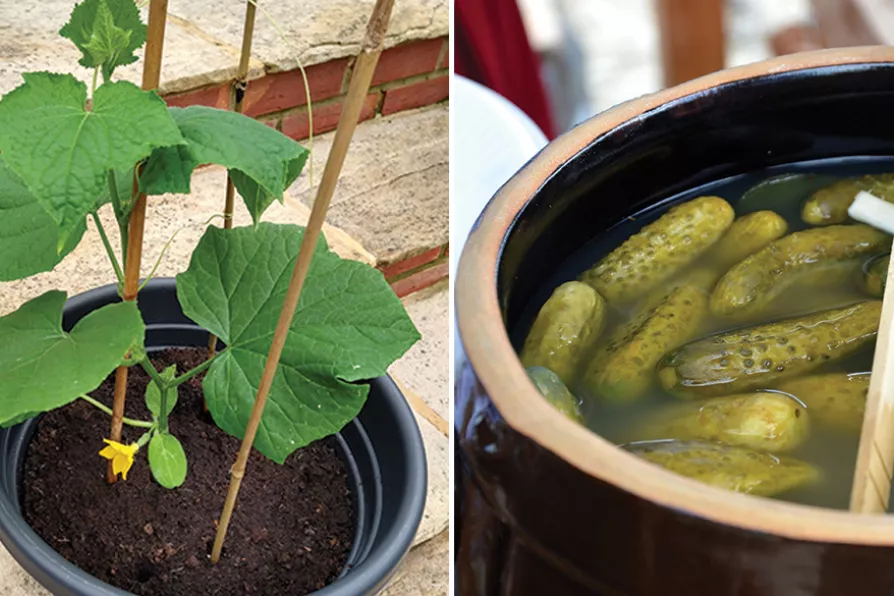Despite the adoring support from Elon Musk and Donald Trump, Javier Milei’s radical-right free-market nightmare is unravelling, and the people are beginning to score major victories against the government in the streets and in elections, reports BEN HAYES

 FROM PLANT TO POT: Cucumbers pickled, Polish style, in a ceramic pot
[(L to R) Philafrenzy/CC - Silar/CC]
FROM PLANT TO POT: Cucumbers pickled, Polish style, in a ceramic pot
[(L to R) Philafrenzy/CC - Silar/CC] WHEN they work well, cucumbers are one of the most prolific and enjoyable garden crops. There is a fair bit that can go wrong with them, so here are a few ideas for improving your chances of success.
I don’t plant outdoor cucumbers into their final positions until June. Most of my “indoor” cucumbers (for greenhouse, garden frame or conservatory) also have to wait, although if I’ve got plenty of plants I will chance one or two in May.
It’s easy for gardeners to be fooled by warm days, but cucumbers hold the firm view that it’s not summer while the nights are still chilly.
Make sure you put the right cuke in the right place. It’ll say on the seed packet whether it’s intended for indoor or outdoor growing, and with a bit of luck that information will also appear on the label if you’re buying young plants.
By the same token, some varieties are more suited to growing in containers than others are, which will be mentioned in the seed catalogue or online description.
None of these categories carry the force of galactic law, but the different types will grow much better in their recommended environment.
The long, thin stem is the cucumber plant’s weak point, easily damaged. Coddling of the delicate stem begins even before the stem exists.
When you sow a cucumber seed, which is best done singly in a 3" (7.5cm) pot, only half fill the pot with compost. Put the seed 1 inch (2.5 cm) beneath the surface of the compost.
After the seed’s germinated the stem will grow rapidly, and will be quite tall long before the plant’s ready for planting out or moving on to a bigger pot. So, once the stem reaches the rim of the pot, you then gently fill in the rest of the “missing” compost.

Doomed adolescents, when the missing person is you, classic whodunnit, and an anti-capitalist eco-thriller

MAT COWARD sings the praises of the Giant Winter’s full-depth, earthy and ferrous flavour perfect for rich meals in the dark months

The heroism of the jury who defied prison and starvation conditions secured the absolute right of juries to deliver verdicts based on conscience — a convention which is now under attack, writes MAT COWARD

As apple trees blossom to excess it remains to be seen if an abundance of fruit will follow. MAT COWARD has a few tips to see you through a nervy time














